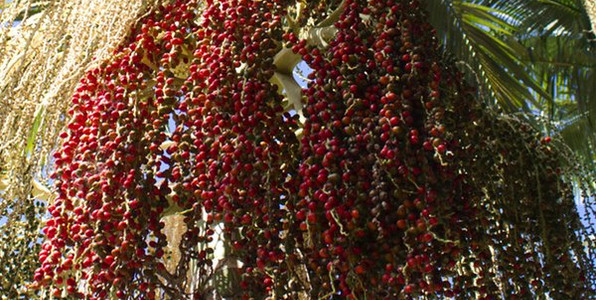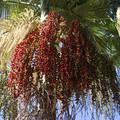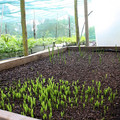Gallery
Click the thumbnails below to view image gallery:Pollination is how most, if not all plants and flowers propagate. It is essential in making sure that the world's foliage is able to maintain the delicate balance of the eco system.
Palms also undergo the same process of propagation. Palms are plants that flower enabling them to reproduce through the pollen of the flowers. Different palms have different flowers and vary in appearance and size but the basic procedure is relatively similar for all. Palms produce flowers at different times in their life span, depending on the variety. Some palms flower very rarely and some more frequently. There are even palms that flower near the end of their life like the Fishtail Palms. In this case, the optimum time in which pollination should happen differs from palm to palm.
Palms generally pollinate with the help of the wind and insects. The insects may feed or simply land on the mature fruits and flowers where the seeds are located. The pollen from the seeds or flowers then sticks to the insect's legs and is transferred to the next palm.
Palms have either male and female flowers on the same plant (dioecious) or one sex per plant (monoecious) and need a male and female plant.
In commercial pollination and palm growing centres, they can manipulate the pollination process to ensure that the male and female pollen is able to mix in optimum conditions.The success rate decreases the longer it takes to make the plants pollinate.
Pollination is a cycle that every plant undergoes, some for multiple times in their lifetime. Although nature provides the requirements that plants need to successfully propagate, there are still some ways that you can improve the chances of a successful plant reproduction.
If you are planning to pollinate and propagate your palm, here are some tips that you can use.
In order to increase the quality of the reproduction process, the palm must have adequate sunlight for pollination. Direct sunlight is best. Pollination should be avoided during rainy seasons or in very moist surroundings. If germinating your own seed, some palms are easy and others are hard. Always use fresh seeds, which can be soaked for a day or two, changing the water daily. If the palm is tropical it needs a high minimum overnight temperature or a heat bed (basically a waterproof electric blanket under the potting mix) if germinating during winter outside the tropics. Palm seeds usually take around 2 to 3 months to germinate during summer Alexandra's may take 1 to 2 months, Kentia's may take up to a year, Wine palm seed germinates somewhat easier if the seed is cracked exposing the smaller seeds within. Use a potting mix in a tray, cover the seed with about the same amount of soil as the size of the seed and keep moist, shaded and protected from rodents.
<< Previous Palm Pests and Applying Proper Extermination Techniques | Back to Mullumbimby Palm Blog | Next >> Palm trees that will grow in Sydney, Wollongong, Newcastle, South and Central Coast





